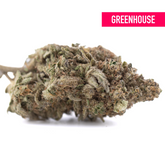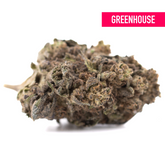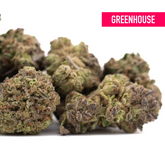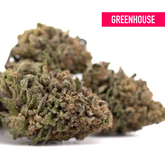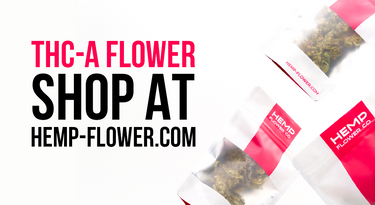THCa Flower Effects: What to Expect and How to Prepare
As cannabis science advances, two acronyms dominate the conversation: THCa and THC. While they share strikingly similar names and chemical backbones, their practical effects, legal status, and ideal use cases diverge sharply. Whether you’re exploring thca flower, sampling potent thca dabs, or comparing these compounds to other hemp derivatives like delta 8 flower and cbg flower, understanding the nuances between THCa and THC empowers you to make safer, more effective choices.
Chemical and Molecular Structures
At their cores, THCa (tetrahydrocannabinolic acid) and THC (delta-9-tetrahydrocannabinol) share the molecular formula C₂₁H₃₀O₂, but a crucial extra carboxyl group (–COOH) distinguishes THCa. This acidic moiety prevents THCa from binding effectively to CB1 receptors in the brain, rendering it non-intoxicating in raw form. Only once heat removes CO₂ during decarboxylation does the molecule become psychoactive THC.
Key Points:
-
THCa: Acidic precursor, incapable of producing euphoria until heated.
-
THC: Decarboxylated, lipophilic, readily crosses the blood–brain barrier.
Understanding this structural shift clarifies why THCa products offer wellness benefits without a high, while THC drives classic cannabis euphoria.
Decarboxylation: Unlocking Potency
Decarboxylation is the process by which heat—smoking, vaping, or baking—removes the carboxyl group, converting THCa to Delta-9 THC. This reaction typically occurs around 220–240°F (104–116°C) over 30–45 minutes for edibles, while combustion or vaporization achieves it in seconds.
| Method | Temp (°F) | Time | Conversion Efficiency |
|---|---|---|---|
| Smoking/Vaping | ~400–430 | Instant | 80–90% |
| Oven Decarboxylation | 240 | 30–45 min | 90–95% |
| Rosin Pressing | 220–260 | Seconds under pressure | 70–85% |
Proper decarboxylation is essential for consumers seeking reliable dosing from thca concentrate bulk or prepared edibles.
Psychoactivity and Consumer Effects
THCa (Raw)
-
Non-Intoxicating: No cognitive impairment or euphoria.
-
Potential Benefits: Anti-inflammatory, antiemetic, neuroprotective in early research.
-
Use Cases: Fresh juices, low-heat tinctures, topical applications.
THC (Activated)
-
Intoxicating: Euphoria, altered perception, appetite stimulation.
-
Side Effects: Anxiety, paranoia, dry mouth, short-term memory issues at high doses.
-
Use Cases: Recreational smoking, high-dose medicinal dosing, edibles.
Consumer choice depends on the desired outcome—wellness user vs. psychoactive experience.
Therapeutic Profiles: Wellness vs. Recreation
While both cannabinoids show therapeutic promise, their profiles vary:
| Feature | THCa | THC |
| Inflammation | Strong anti-inflammatory effects | Moderate |
| Pain Relief | Emerging evidence for analgesia | Established analgesic pathways |
| Nausea | Anti-emetic | Anti-emetic at moderate doses |
| Neuroprotection | Potential neuroprotective properties | Limited direct evidence |
| Psychoactivity | None | Significant |
Wellness-oriented consumers may prefer cbd hemp flower or raw THCa products, while those seeking recreation gravitate toward THC-rich flower or thca dabs.
Legal Status and Compliance
Under the 2018 Farm Bill, hemp and derivatives testing ≤0.3% Delta-9 THC (on a dry weight basis) are federally legal. Since THCa converts to THC upon decarboxylation, labs calculate total potential THC:
Total THC = THCa × 0.877 + Δ9-THC
If the result exceeds 0.3%, the product is deemed marijuana. Consumers should verify COAs when they buy CBD flower or any high-THCa product to ensure compliance. State laws may impose additional restrictions on smokable hemp flower.
Consumption Methods: Flower, Wax, and Concentrates
Hemp Flowers
-
Hemp flowers and CBD hemp flower are raw buds rich in CBD and trace THCa, ideal for non-psychoactive use.
THCa Dabs
-
THCa dabs: Concentrates delivering high THCa percentages (70–95%). Requires dab rig or e-nail for vaporization.
THCa Wax & Shake
-
THCa wax: Soft, malleable extract.
-
THCa shake: Loose trichome-rich bits sold at discount prices for infusion or smoking.
Bulk Concentrates
-
THCa concentrate bulk: Wholesale lots for retailers and extractors seeking high-throughput production.
Selecting the right format depends on equipment, experience, and desired potency.
Comparing Products: Shake, Wax & Bulk Concentrates
| Product Type | THCa % Range | Use Case | Value Proposition |
| Shake | 15–25% | Smoking, DIY infusions | Low cost, high volume |
| Wax/Badder | 70–85% | Dabbing, microdosing | Flavorful, easy handling |
| Concentrate Bulk | 80–98% | Commercial extraction, vape carts | Economies of scale, consistent THC |
Budget-focused users might start with shake, while enthusiasts invest in wax or bulk concentrates for precision and potency.
Synergies with Other Cannabinoids
Combining THCa/THC with CBG flower or CBD may optimize therapeutic effects:
-
CBD + THCa/THC: CBD mitigates THC-induced anxiety; THCa provides raw therapeutic support.
-
CBG: Offers additional anti-inflammatory and neuroprotective actions.
Formulations that blend multiple cannabinoids and terpenes—such as full-spectrum hemp flowers—harness the entourage effect for enhanced outcomes.
Safety, Dosing, and Side Effects
Dosing Guidelines
-
THCa Dabs: Start at 2–5 mg THCa; titrate slowly.
-
Flower: 0.1–0.2 g bowl or joint.
-
Edibles: 5–10 mg THC equivalent per dose.
Side Effects
-
THC: Dry mouth, red eyes, impaired coordination, anxiety at high doses.
-
THCa: Minimal acute side effects when raw; caution when activated.
Responsible consumption involves microdosing, clear labeling, and awareness of personal tolerance.
Selecting the Right Format for Your Needs
-
Wellness Focus: Raw cbd hemp flower, low-heat tinctures, THCa shake for juicing.
-
Balanced Experience: Moderate-THCa flower with visible trichomes.
-
Potent Recreational Use: THCa dabs, wax, and bulk concentrates.
Equipment availability, lifestyle preferences, and tolerance guide format selection.
Future Trends: THCa Innovations
Emerging developments include:
-
Nanoemulsified THCa: Rapid onset, consistent dosing in beverages.
-
Designer Terpene Profiles: Custom-flavored wax and dabs.
-
Personalized Genetics: Strains bred for specific THCa:THC ratios.
Staying informed ensures consumers leverage the latest advancements in THC derivatives.
Conclusion: Empowered Consumer Choices
While THCa and THC stem from the same plant pathways, their chemical distinction drives vastly different user experiences. Raw THCa delivers non-intoxicating therapeutic benefits, while THC unlocks psychoactive euphoria. Comparing formats—thca wax, thca shake, thca dabs, and thca concentrate bulk—enables tailored dosing for wellness or recreation. Meanwhile, exploring other cannabinoids like CBD and CBG within full-spectrum hemp flowers amplifies the entourage effect.
For further guidance and access to our curated collection of hemp and THCa products, visit our knowledge hub and shop at https://https://hemp-flower.com/blogs/news. Armed with this knowledge, you can navigate the evolving cannabis landscape with confidence.
